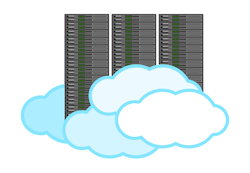Lumen sets cloud business service migrations and sales strategies
Lumen Technologies is moving on various initiatives to drive profitability in its business services segment by enhancing its cloud service set and developing new sales team training methods.
The service provider has been building a migration platform to the cloud for its voice customers on its own and striking partnerships with cloud players like Alianza. It recently launched Lumen Cloud Communications on the Alianza platform and will position it as a primary option for customers ready to migrate to a cloud communications solution.
Kate Johnson, CEO of Lumen, told investors during its second-quarter earnings call that it is realigning its sales team by equipping them with similar solutions in the Lumen Cloud Communications platform.
“In our business segment, we're building a program to drive commercial excellence that uses all the same tools in our voice migration program, and we've built a hiring engine to go after tech sales talent,” she said. “We're using AI in our sales platform to drive more automated and informed seller activities. And we use data and analytics to create wind formulas to help our managers coach our salespeople.”
Already, Lumen said this focus is driving results. In a small mid-market pilot where we deployed these tools, Lumen saw an 80% reduction in sales cycle time and an 85% shortened customer onboarding time. These tools also drive up win rates in the business channel, increasing 160% since the start of the year and a 50% year-over-year increase in new global acquisitions for its grow products.
Johnson said, “Emerging technology trends, such as AI and data-driven services, will lead to large-scale demand increases for our growth products.”
In the second quarter, Lumen’s approach drove customer wins in technology, retail, manufacturing and financial services. “The consistent theme in these wins at customers like Quick Trip and Provident Bank is that Lumen's focus on customer experience and their business outcomes was a key differentiator in the selection process,” Johnson said. “This focus is part of the reason why our grow product sales trend returned to year-over-year growth for the first time in four quarters.”
ExaSwitch, NaaS capabilities emerge
Besides its new cloud migration strategy, the service provider has introduced two innovations to drive business services growth: ExaSwitch and an Internet On-Demand capability on its Network-as-a-Service (NaaS) platform.
Lumen’s ExaSwitch is a new on-demand 400-gig capable optical interconnection platform announced mid-June. ExaSwitch was created in collaboration with Google and Microsoft. This platform allows organizations with high bandwidth needs to route their traffic dynamically and quickly between networks and without third-party intervention.
“Created in partnership with Google, Microsoft and another large hyperscaler, this platform leans into the growth tailwinds like Gen AI and Edge Cloud by enabling the low latency and flexibility customers will need as network demands increase with explosive data growth,” Johnson said. “Exa Switch is a great example of the new Lumen strategy coming to life. We're using our intellectual property and innovating side-by-side with customers and partners to create differentiated technology in an on-demand digital fashion.”
Lumen’s Internet On-Demand is the first service added to the Lumen NaaS platform, starting with limited availability. The service provider said NaaS would expand to include security services, such as DDoS (Distributed Denial of Service), SASE (Secure Access Service Edge), and Edge services.
“By offering customers radical flexibility in how they buy, use and manage networking services, Lumen is cloudifying traditional telecom,” Johnson said. “We've been preparing for this moment for a long time, building a world-class telecom network with state-of-the-art fiber, broad coverage and unsurpassed route diversity and scalability.”
Revenue challenges remain
While the new initiatives could affect business segment growth, the service provider reported that second-quarter enterprise segment revenues, excluding wholesale, declined 1.8 sequentially.
The company’s considerable enterprise revenue declined 1.3% sequentially in the second quarter. Overall Business Segment Revenue fell 2% to $2.89 billion.
“Large enterprise revenue trends were like the first quarter year-over-year when excluding the impact of divested businesses, driven primarily by declines in harvest due to legacy, voice and partially offset by stronger trends in growth due to demand for cloud, colocation, and IP,” said Chris Stansbury, CFO of Lumen. “Our exposure to legacy voice revenue continues to improve and is now less than 11% of enterprise channel revenue and is down approximately 50 basis points sequentially.”
The company also saw a dip in public sector revenue, which declined 3.7% sequentially. “Excluding the impact of our divested businesses, public sector trends worsened year-over-year primarily due to lower other revenue, which includes non-recurring equipment and IT solutions,” Stansbury said. “Declines in nurture and harvest products were also contributed to the declines, with a partial offset by accelerating growth within grow driven by IP, Voice over IP and wavelengths.”
Stansbury added that Lumen had a contract that expired at the end of the 2022 quarter, “impacting the year-over-year comparisons for public sector grow products by approximately $10 million. Mid-market revenue declined 1.6% sequentially.”
Wholesale revenue declined 2.4% sequentially. Stansbury said, “We expect our wholesale channel will likely continue to decline over time, and it is an area we manage for cash.”
For related articles, visit the Business Topic Center.
For more information on high-speed transmission systems and suppliers, visit the Lightwave Buyer’s Guide.
To stay abreast of fiber network deployments, subscribe to Lightwave’s Service Providers and Datacom/Data Center newsletters.

Sean Buckley
Sean is responsible for establishing and executing the editorial strategies of Lightwave and Broadband Technology Report across their websites, email newsletters, events, and other information products.
